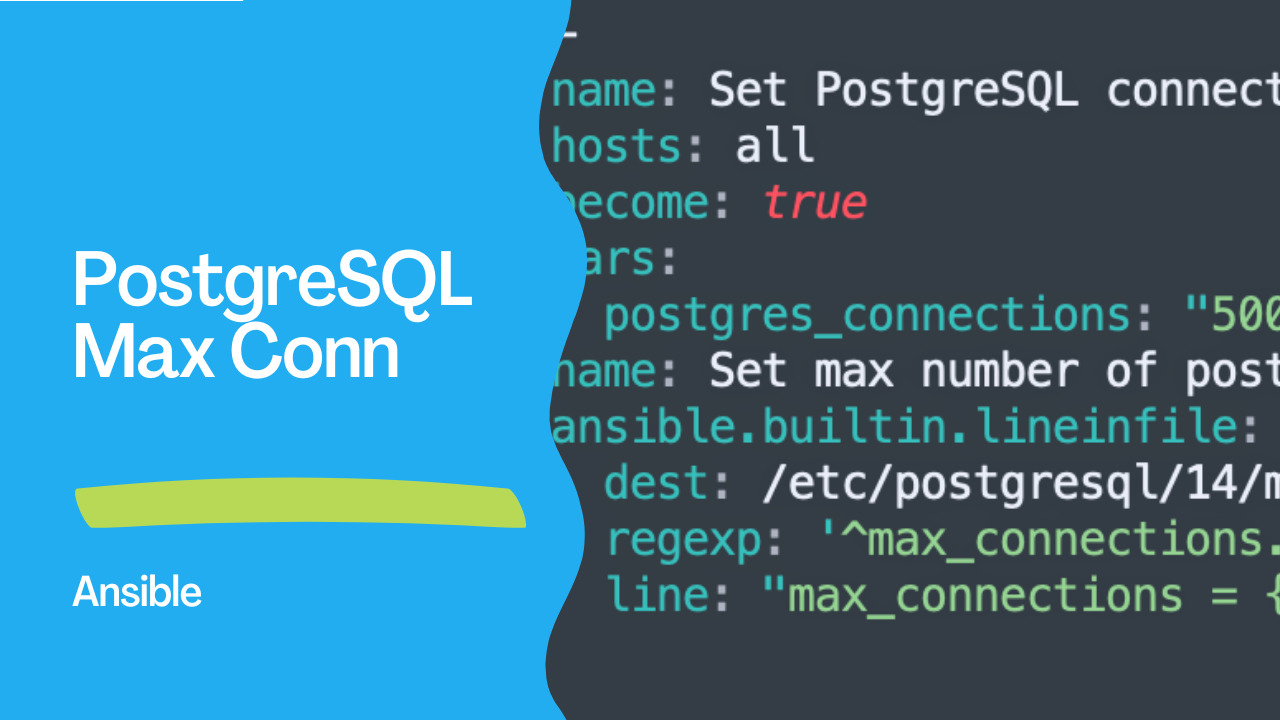Introduction
PostgreSQL, a powerful open-source relational database management system, is widely used in various applications to store and manage data. As your application grows, optimizing the configuration of PostgreSQL becomes essential to ensure optimal performance. In this article, we’ll explore how to automate the process of setting the maximum number of connections in PostgreSQL using Ansible.
Ansible, a popular automation tool, allows system administrators and DevOps teams to define infrastructure as code. By using Ansible playbooks, you can automate repetitive tasks, making it easier to manage and configure PostgreSQL across multiple servers.
Setting Maximum Connections with Ansible
In the provided Ansible playbook snippet, we focus on setting the maximum number of PostgreSQL connections. Let’s break down the key components of the playbook:
- Hosts and Privilege Escalation:
- name: Set PostgreSQL connections
hosts: all
become: true
This section defines the playbook’s name, targets all hosts (‘all’), and specifies that privilege escalation (become) is required. Privilege escalation ensures that Ansible executes tasks with elevated permissions, allowing the necessary changes to be made to system files.
- Variable Declaration:
vars:
postgres_connections: "500"
Here, we declare a variable named postgres_connections and set its value to “500.” You can customize this value based on your specific requirements and server capacity.
- Task to Update PostgreSQL Configuration:
- name: Set max number of PostgreSQL connections
ansible.builtin.lineinfile:
dest: /etc/postgresql/14/main/postgresql.conf
regexp: '^max_connections.*$'
line: "max_connections = {{ postgres_connections }}"
This task uses the lineinfile Ansible module to ensure that the specified line in the PostgreSQL configuration file is present and has the desired value. The dest parameter specifies the path to the PostgreSQL configuration file, and the regexp parameter defines the regular expression to identify the line that needs to be modified. The line parameter sets the new value for the maximum number of connections.
Playbook
---
- name: Set PostgreSQL connections
hosts: all
become: true
vars:
postgres_connections: "500"
- name: Set max number of postgresql connections
ansible.builtin.lineinfile:
dest: /etc/postgresql/14/main/postgresql.conf
regexp: '^max_connections.*$'
line: "max_connections = {{ postgres_connections }}"
Conclusion
Automating the configuration of PostgreSQL with Ansible can significantly streamline the management of database servers, ensuring consistency across your infrastructure. The provided Ansible playbook snippet Playbooknstrates how to set the maximum number of PostgreSQL connections, allowing you to adapt and scale your database environment efficiently.
As you integrate Ansible into your workflow, consider exploring additional automation tasks to enhance the performance, security, and scalability of your PostgreSQL databases. The flexibility of Ansible makes it a valuable tool for DevOps practitioners and system administrators seeking to automate routine tasks and achieve a more robust and efficient infrastructure.
Subscribe to the YouTube channel, Medium, and Website, X (formerly Twitter) to not miss the next episode of the Ansible Pilot.Academy
Learn the Ansible automation technology with some real-life examples in my
Udemy 300+ Lessons Video Course.

My book Ansible By Examples: 200+ Automation Examples For Linux and Windows System Administrator and DevOps

Donate
Want to keep this project going? Please donate
